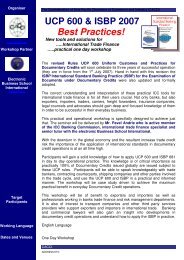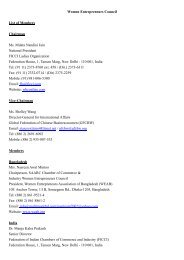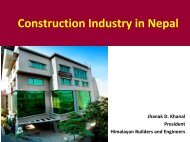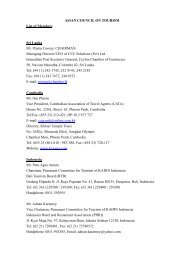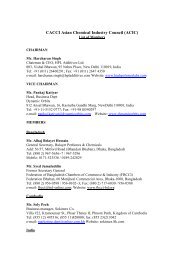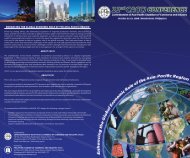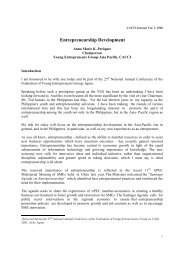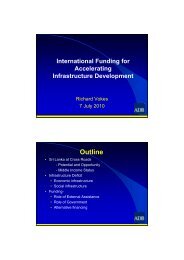The Importance of Traditional Techniques - cacci
The Importance of Traditional Techniques - cacci
The Importance of Traditional Techniques - cacci
You also want an ePaper? Increase the reach of your titles
YUMPU automatically turns print PDFs into web optimized ePapers that Google loves.
CACCI Journal, Vol. 1, 2006Policies in the 20 th centuryIn 1972, K. Tanaka was nominated as Prime Minister. He was the first prime ministerfrom the "backside <strong>of</strong> Japan" and made a radical innovation in innovation policies. His ideawas to promote local economies by relocating heavy industries to local areas. As bigenterprises had modern technologies, relocating their factories could be expected to stimulatelocal SM Es to raise their technology levels. But strong urban criticism and the oil crisis <strong>of</strong>1973 hindered his plan. He did, however, have a strong impact on regional developmentpolicies.Severe pollution problems moved local residents to invite only "clean" high-tech industries,such as information technology (IT) industries. In the 1970s and 1980s, the central governmentencouraged local governments to construct science-based high-tech industry districts, calledscience parks, techno-parks or academia parks. Nearly 100 science parks were constructed inevery part <strong>of</strong> Japan. At the same time, local governments invested in research and development(R&D), which attracted public attention. <strong>The</strong> central government's White Paper on S& Twelcomed local R&D. In the beginning <strong>of</strong> the 1990s, however, recession hit the Japaneseeconomy and gave rise to financial deficits in the public sector as well as in the private sector.Industrial R&D expenditure decreased and few industries came to science parks, which remainvacant even today.Around 2000, the central government made the second radical innovation in innovationpolicies, shifting from the promotion <strong>of</strong> big enterprises to the promotion <strong>of</strong> small ventures andfrom regional development back to promotion <strong>of</strong> ETs in urban areas. This shift is discussedbelow.High-tech to ETChange in definition<strong>The</strong> industrial policy from the Korean War to the 1990s had been to rebuild and grow theheavy and chemical industries, and through them to lead a total economic development, asStalin had earlier conceived for the USSR. Sut this idea was no longer regarded as effective.Indeed, N. Khrushchev shifted Stalin's policy to the promotion <strong>of</strong> ETs such as spacedevelopment. Under John F. Kennedy, the USA too followed this policy.<strong>The</strong> USSR and the USA spent a great amount <strong>of</strong> resources on ETs, which gave noimmediate returns in economic terms. In the meantime, Japan continued to develop the heavyand chemical technologies and achieved world leadership in cars, TV sets, IC chips, carbonproducts and others. Japan called such technologies high-tech and was satisfied with them,even though its s<strong>of</strong>tware technologies were at a relatively low level.After the demise <strong>of</strong> the USSR, however, US industries shifted emphasis from military toindustrial technologies and began to excel Japan in the latter. In particular, US research inDNA and bio-technology is far above its Japanese counterpart. Simultaneously, Japanesehigh-tech began to lose competitively in the world market. Today, indeed, many Asiancountries are strong competitors <strong>of</strong> Japan not only in steel and cars but also in electronics ands<strong>of</strong>tware.4



